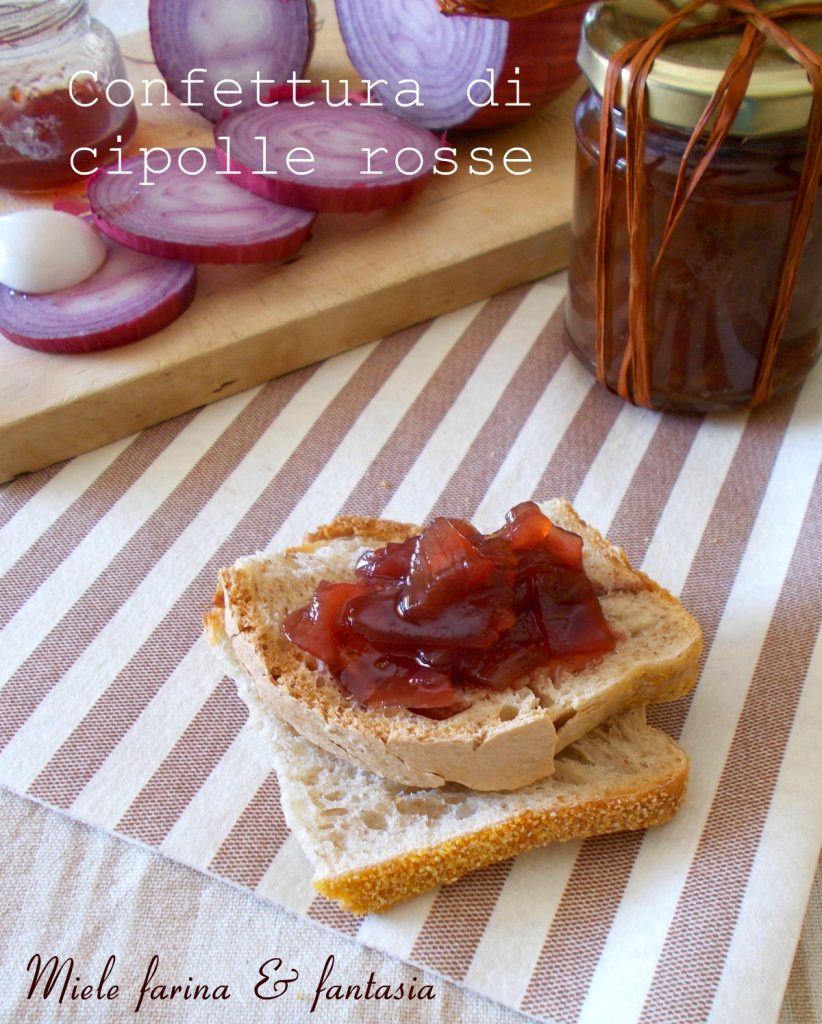Have you ever tasted the sweet and sour red onion jam? Ideally, you should use Tropea red onions for their unmistakable aroma and flavor, but in their absence, other types can still be used. It’s delicious, easy, and pairs well with aged cheeses, roasted or boiled meats, both red and white, fried foods, and raw vegetables; it’s also delightful eaten alone on bread or canapés. Preparing this delight is very simple and it’s ready to use immediately, although the longer it rests, the more aromatic and flavorful it will become. I recommend using small jars or preparing small quantities because once opened, the jam should be consumed quickly. The amount of spices is based on our tastes, it contains no gluten or lactose: It’s obvious that the sweet and sour red onion jam can be customized as we like.
If you want to try the golden onion jam, check out my recipe

- Difficulty: Very Easy
- Cost: Medium
- Rest time: 12 Hours
- Preparation time: 15 Minutes
- Cooking methods: Stovetop
- Cuisine: Italian
- Seasonality: All Seasons
Ingredients
- 2.2 lbs red onions (weighed after removing waste)
- 14 oz granulated sugar
- 1.7 cups apple cider vinegar (or white wine vinegar)
- 4 leaves fresh bay leaves
- 3 cloves (crushed)
Tools
- 1 Slicer
Steps
Clean the onions by removing the outer skin and any damaged parts.
Slice them very thinly or chop them, depending on your needs, and place them in a large pot.
Add all other ingredients and stir to perfectly distribute the sugar, vinegar, and flavors. Cover the pot and let the mixture rest for a full day, stirring occasionally.
Sterilize all jars, lids, and utensils that will come into contact with the jam (ladles, spoons, etc.).
After the resting time, cook the red onion jam on a medium burner at a low flame with a lid (leaving a gap between the pot and lid) for about 40/45 minutes or until the liquid has reduced and thickened.
Cooking time may vary depending on how much liquid (which will be added to the vinegar) the onions release when in contact with sugar.
During cooking, when the onions have become tender, you can blend everything (removing the spices first) into a more or less creamy composition, according to taste.
To check if it’s done, perform the “plate test” by putting a bit of jam on a perfectly dry plate: If the jam slides off quickly or is obviously too liquid, it’s not ready yet; if it slides down slowly, you need to turn off the heat and immediately fill the jars (perfectly dry) up to 0.8 inches from the rim. Be careful not to overcook it, as jams and preserves tend to become firmer as they cool.
Immediately turn the jars upside down to allow vacuum formation and let them cool without touching. The sweet and sour red onion jam is ready to use; however, I personally let it rest in a cool, dry, dark place for at least a week before starting to enjoy it.
If you want to pasteurize the onion jam for additional safety and longer preservation over time, when the jars are cool, wrap them individually in kitchen towels (to prevent breakage during boiling) and bring to a boil. From the first boil, pasteurize for 30 minutes. Then, turn off the heat and let cool without touching the jars. Finally, dry them thoroughly and store them in a cool, dry, dark place, labeling them with the production date.

